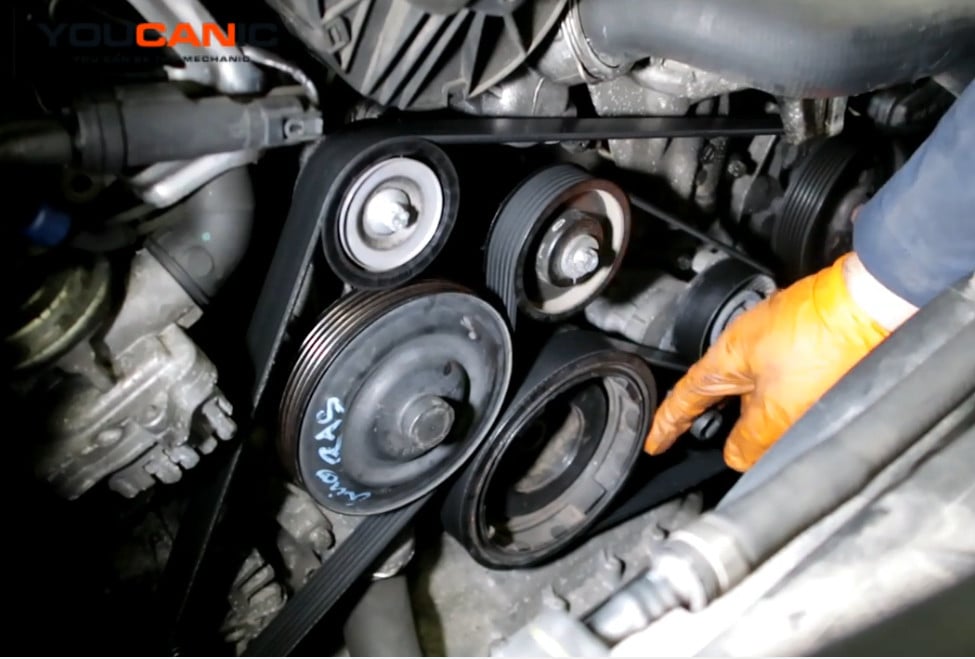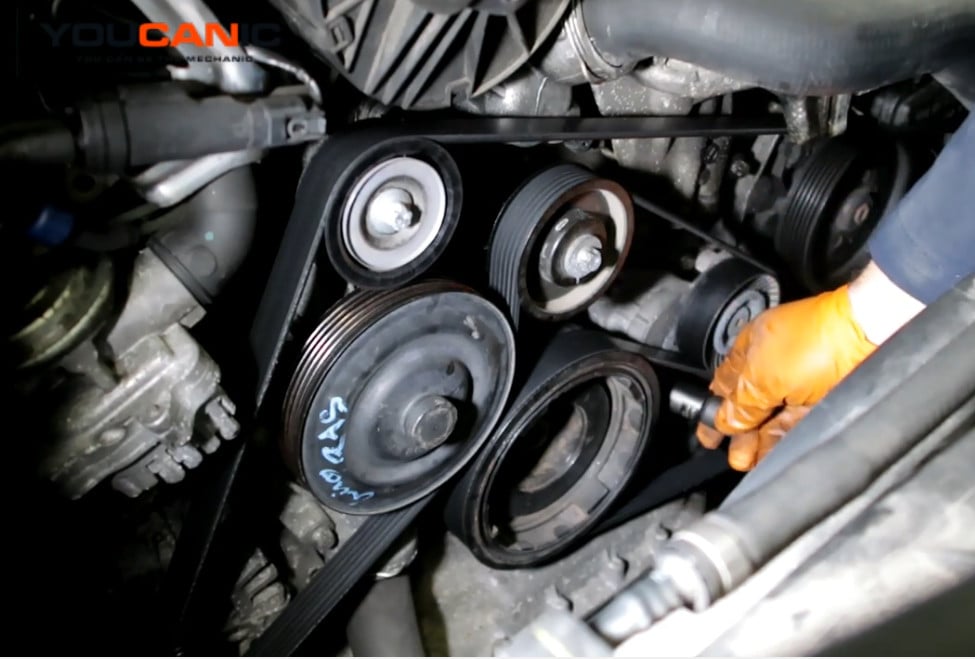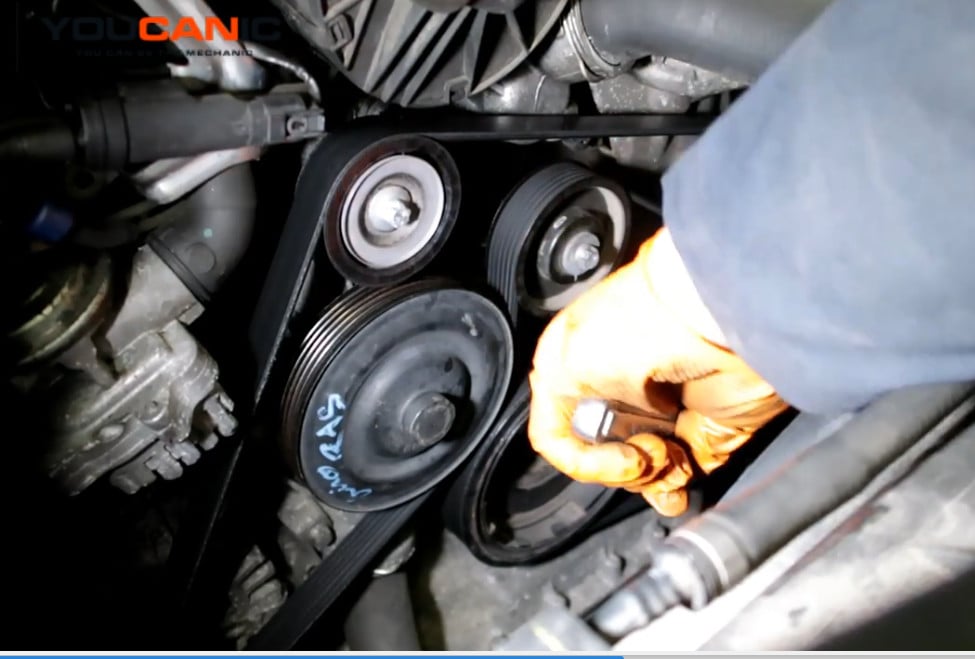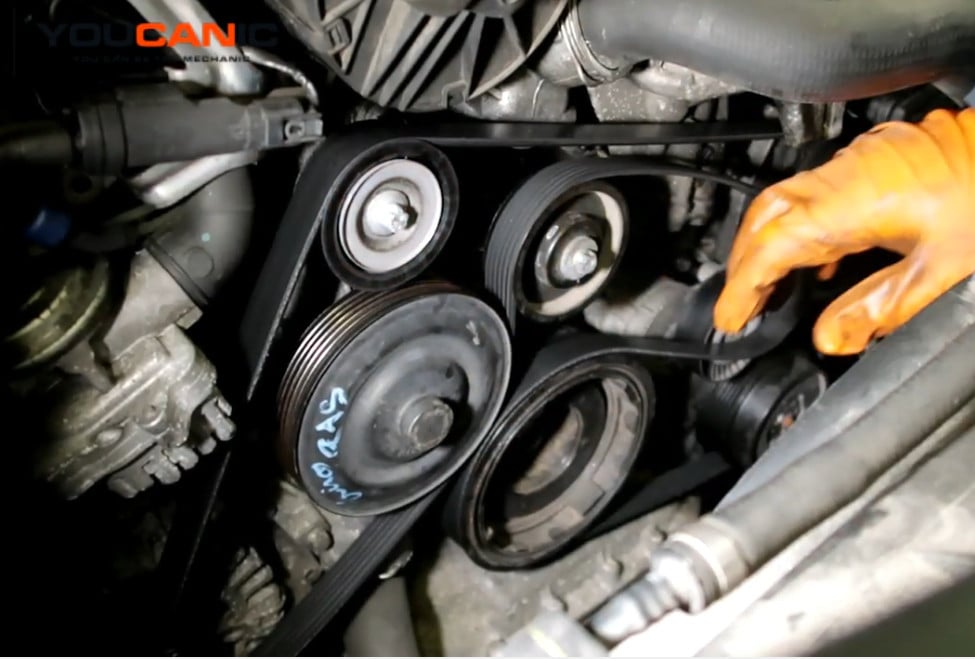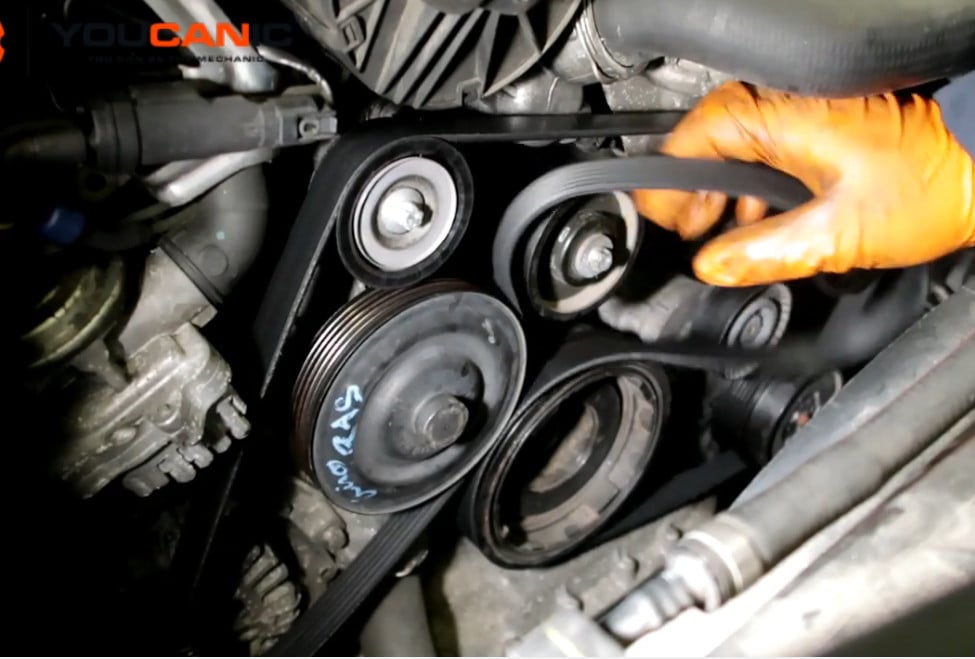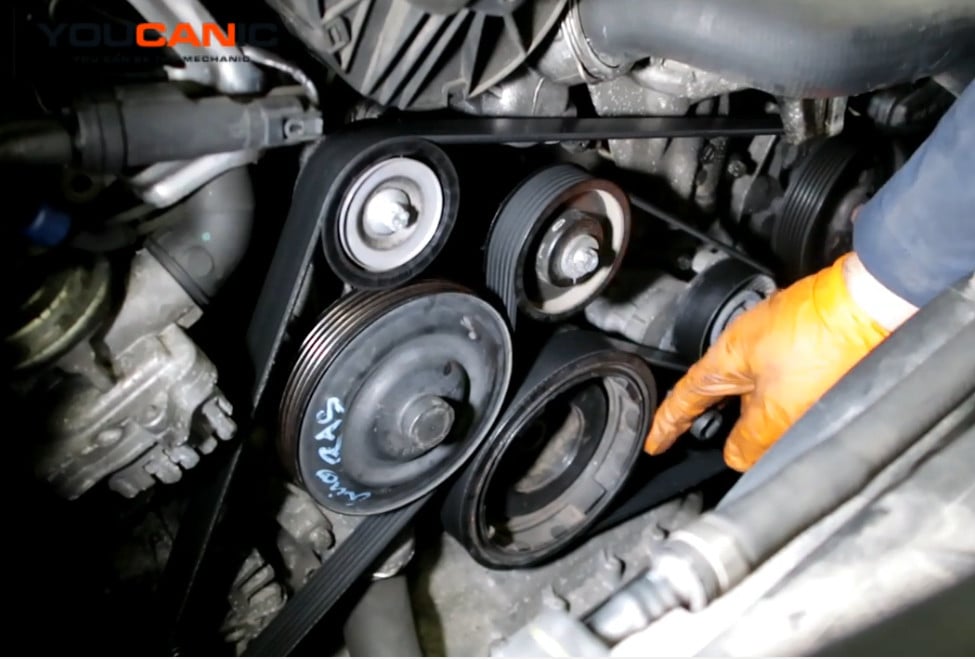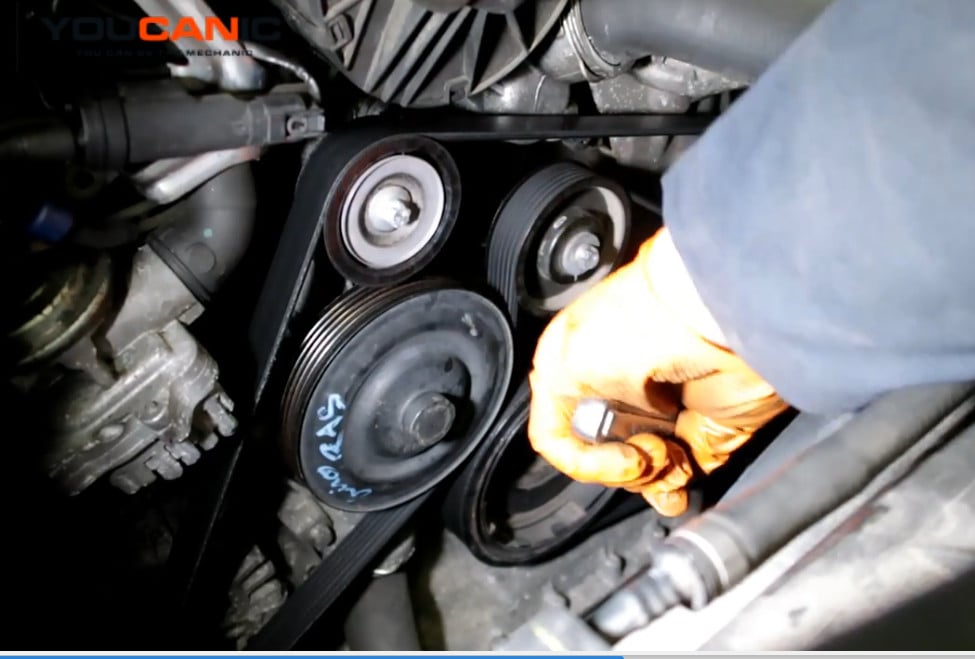Mercedes-Benz ML, R, GL Class – Replace Serpentine Belt
Is there a squealing noise when your Mercedes-Benz engine is on? Learn how to fix the problem by replacing the serpentine belt of your Mercedes-Benz. This guide provides instructions on replacing the serpentine belt of a Mercedes V6, V8, and V12 Engines.
Symptoms
Common symptoms of a bad serpentine belt include:
- Squealing noise when the engine is on.
- The check battery light is on.
- Insufficient AC cooling during traffic.
What will you need?
Parts
- Mercedes-Benz Serpentine Belt
Tools
- 17mm deep socket
- Socket handle
Procedure
- Park the vehicle on level ground, set the parking brakes, and allow the engine to cool down.
- Draw a layout of your serpentine belt’s original routing or, at a minimum, take a picture so that when you install the new belt, you will know how to route it.

- Insert the 17mm socket into the tensioner bolt.

- Put on the socket handle and turn counterclockwise to loosen the belt tensioner. The tensioner should move upwards.

- Slide the belt off the idle pulley on top or any pulley you find easy.

- Remove the belt from all the pulleys and discard it.

- Inspect the new serpentine belt. Position it according to the drawn layout. Make sure your pulley is seated properly on all the pulleys.

- Using a 17mm socket and a handle, turn the tensioner bolt counterclockwise, as you did to release the belt.

- Slide the belt over the tensioner pulley and slowly release the tensioner. If you cannot slide the belt over the tensioner pulley because it seems too short, there is a good chance that the belt is not seated properly on one of the pulleys.
- Inspect the belt position at each pulley.
- Start the engine and inspect.
Frequently Asked Question
How do you know if your serpentine belt is bad?
One of the common symptoms of a defective serpentine belt is a squealing noise when the engine is on. Since the serpentine belt drives the alternator, coolant pump, and AC compressor, you may experience low alternator output, low AC cooling efficiency, and higher engine temperature.
Can you drive a Mercedes-Benz with a bad serpentine belt?
It is not recommended to drive with a bad serpentine belt. If the serpentine belt fails, power steering will get hard, and the alternator will not charge the battery, leading to the engine dying while driving.
How much does it cost to replace a serpentine belt?
If you’re replacing the serpentine belt, the part will cost around $50-100. The labor cost would be around $ 50 – 150.
How do you know if your serpentine belt is bad?
One of the common symptoms of a defective serpentine belt is a squealing noise when the engine is on. Since the serpentine belt drives the alternator, coolant pump, and AC compressor, you may experience low alternator output, low AC cooling efficiency, and higher engine temperature.
Can you drive a Mercedes-Benz with a bad serpentine belt?
It is not recommended to drive with a bad serpentine belt. If the serpentine belt fails, power steering will get hard, and the alternator will not charge the battery, leading to the engine dying while driving.
Applications
Mercedes-Benz vehicles with V6, V8, and V12 engines.
We hope you find the Mercedes-Benz ML, R, GL Class – Replace Serpentine Belt guide helpful. Check these troubleshooting and repair guides for more help on your Mercedes-Benz.




